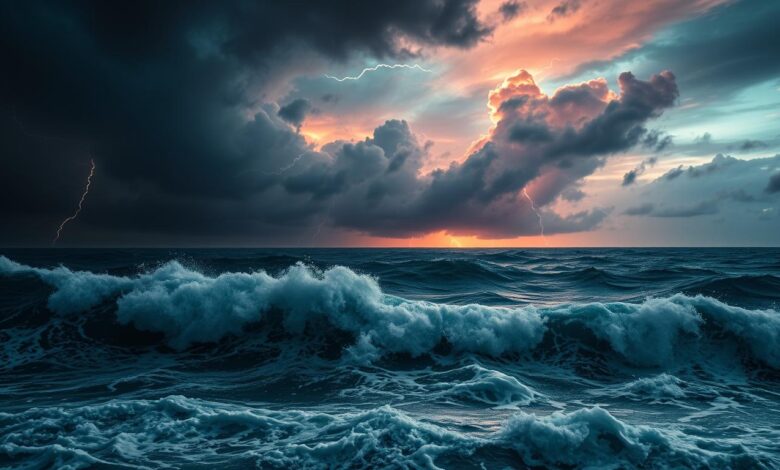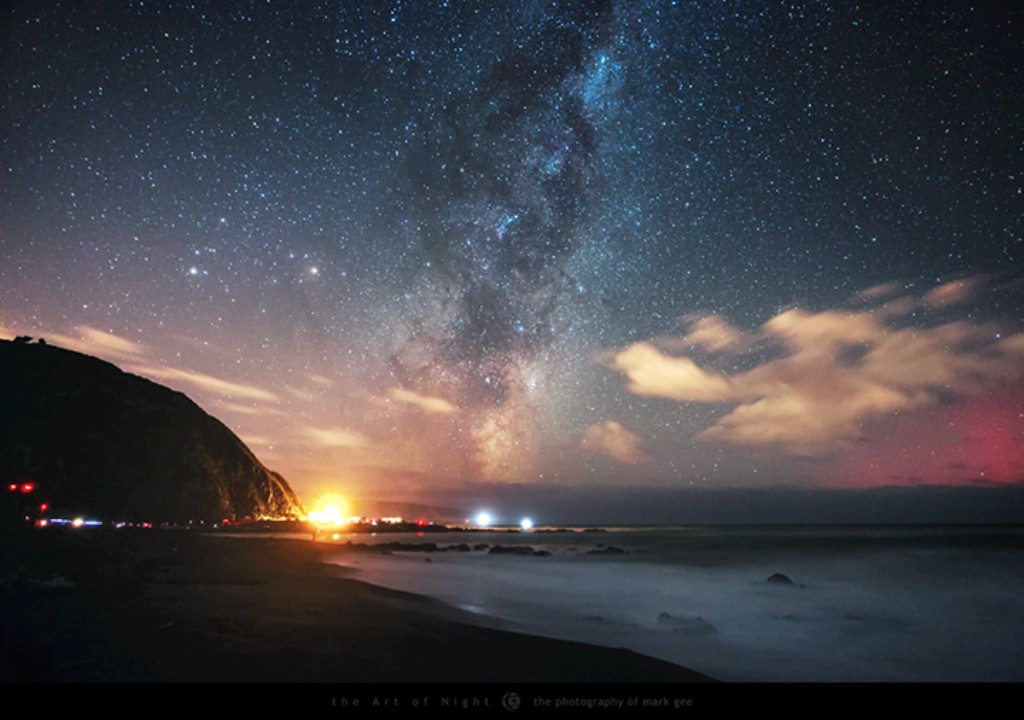
Atlantic Hurricane: Top 10 Things You Need to Know
The 2023 Atlantic hurricane season is here, and it’s important to stay informed. This year, we’re expecting more hurricanes than usual. It’s crucial to know about their power and how they can affect us.
In the past, hurricanes like Ida and Ian have shown us their destructive power. We must prepare ourselves and our communities for what’s coming.
In this guide, we’ll cover the top 10 things about Atlantic hurricanes. We’ll talk about how they form, their intensity, and their impact on coastal areas. We’ll also look at how technology helps predict and track them.
By learning more about hurricanes, we can better protect ourselves and our loved ones. Let’s stay prepared and keep our communities safe.
1. What is an Atlantic Hurricane?
An Atlantic hurricane is a strong storm that forms in the Atlantic Ocean, Caribbean Sea, or Gulf of Mexico. It has a circular wind pattern and winds of at least 74 mph (119 km/h). This makes it a “hurricane” according to the Saffir-Simpson Hurricane Wind Scale.
1.1 Definition and Characteristics of Atlantic Hurricanes
Atlantic hurricanes are a kind of tropical cyclone. They are storms with a low-pressure center and strong winds. They form over warm ocean waters and get their energy from the heat and moisture released when water vapor condenses.
These storms have a spiral band structure. The strongest winds and heaviest rainfall are near the storm’s center, or “eye”. Hurricanes can be up to 400 miles wide, but average around 300 miles.
1.2 How Atlantic Hurricanes Differ from Cyclones and Typhoons
Hurricanes, cyclones, and typhoons are all tropical cyclones, but they form in different places. Hurricanes happen in the Atlantic Ocean, Caribbean Sea, and northeastern Pacific Ocean. Cyclones occur in the northern Indian Ocean, and typhoons in the northwestern Pacific Ocean.
The main differences are where they form, their names, and some characteristics. For example, typhoons usually have stronger winds than Atlantic hurricanes. Cyclones often bring more rain.
1.3 The Atlantic Hurricane Season: When Does It Occur?
The Atlantic hurricane season is from June 1 to November 30. The busiest time is from mid-August to late October. Warm ocean temperatures and the right atmospheric conditions help hurricanes form and get stronger during this time.
Some important facts about the Atlantic hurricane season:
- All of Florida’s coastline has been hit by at least one hurricane since 1850.
- The southeast coast of Florida is very prone to hurricanes, followed by the panhandle.
- About 90% of hurricane-related deaths worldwide are from drowning in storm surges or flooding.
Knowing about Atlantic hurricanes is key for coastal communities to prepare and lessen the storm’s impact.
2. How Do Atlantic Hurricanes Form?
Atlantic hurricanes are powerful storms that can hit coastal areas hard. They form from warm ocean waters, moist air, and certain wind patterns. This process starts with a tropical disturbance, which can grow into a tropical depression, storm, and finally, a hurricane.
2.1 Key Factors: Warm Water, Moist Air, and Wind Patterns
The creation of atlantic hurricane formation relies on several key elements. Warm ocean waters, at least 80°F (26.5°C), are essential for the storm’s growth. Moist, unstable air is also crucial, as it fuels the storm’s development.
Specific wind patterns, like low wind shear, are important too. They help the storm to intensify by keeping its circulation strong. This allows the hurricane to grow into a powerful system.
2.2 Stages of Hurricane Formation: From Tropical Disturbance to Major Hurricane
- Tropical Disturbance: The first stage, where thunderstorms start to organize over warm waters.
- Tropical Depression: The disturbance gets stronger, with winds of 38 mph (61 km/h) or less.
- Tropical Storm: It gets even stronger, with winds between 39-73 mph (63-117 km/h).
- Hurricane: The system reaches hurricane strength, with winds of 74 mph (119 km/h) or more.
- Major Hurricane: It intensifies further, reaching Category 3 or higher, with winds of 111 mph (178 km/h) or more.
2.3 The Role of the Ocean and Atmospheric Conditions in Hurricane Development
The ocean and atmospheric conditions hurricanes are vital for their development. Warm ocean temperatures, between 80-85°F (26.5-29.5°C), give the storm the energy it needs. Atmospheric factors like low wind shear and high humidity also help the storm grow.
These hurricane formation factors work together to create a perfect environment for the storm to form. Understanding these elements is key to predicting the storm’s behavior and impact.
3. Top 10 Most Powerful Atlantic Hurricanes in History
The Atlantic Ocean has seen some of the most destructive hurricanes. These storms have caused a lot of damage, loss of life, and huge economic losses. Let’s look at the 10 most powerful Atlantic hurricanes that have left their mark.
Hurricane Katrina (2005)
Hurricane Katrina hit the Gulf Coast in 2005. It was one of the deadliest and costliest hurricanes ever. It killed around 1,200 people and caused $187 billion in damages.
Hurricane Andrew (1992)
Hurricane Andrew hit Florida and Louisiana in 1992. It caused $56.3 billion in damages, making it one of the most expensive hurricanes in U.S. history. It destroyed many homes, businesses, and buildings.
Hurricane Maria (2017)
In 2017, Hurricane Maria devastated Puerto Rico. It killed nearly 3,000 people. The storm caused power outages, damaged infrastructure, and led to a long humanitarian crisis.
Hurricane Irma (2017)
Hurricane Irma hit the Caribbean and Florida in 2017. It caused $60 billion in damages, making it one of the costliest hurricanes. Its strong winds and storm surge damaged many homes and businesses.
Hurricane Sandy (2012)
Hurricane Sandy hit the East Coast of the U.S. in 2012. It was known for its huge size and destruction. It caused $83 billion in damages, making it one of the most expensive hurricanes to hit the U.S.
Hurricane Wilma (2005)
Hurricane Wilma hit Florida in 2005. It was the most intense Atlantic hurricane on record, with a central pressure of 882 millibars. It caused $21 billion in damages and had a lasting impact.
Hurricane Ike (2008)
Hurricane Ike hit Texas in 2008. It was known for its devastating storm surge and flooding. It caused $40.7 billion in damages, making it one of the costliest hurricanes to hit the state.
Hurricane Michael (2018)
Hurricane Michael hit the Florida Panhandle in 2018. It was one of the strongest hurricanes to make landfall in the continental U.S. Its 919-millibar central pressure and 155-mph winds caused a lot of damage.
The Great Galveston Hurricane (1900)
The Great Galveston Hurricane of 1900 was the deadliest hurricane in U.S. history. It killed at least 8,000 people. The storm’s impact on Galveston, Texas, was devastating and left a lasting mark.
Hurricane Harvey (2017)
Hurricane Harvey hit Texas in 2017. It was one of the costliest hurricanes, with $149 billion in damages. The storm’s heavy rainfall and flooding caused a lot of damage to homes, businesses, and infrastructure.
These 10 Atlantic hurricanes remind us of the power and destruction these storms can cause. As climate change affects our weather, it’s important to stay prepared and face these challenges.
4. The Saffir-Simpson Scale: Measuring Hurricane Strength
The Saffir-Simpson Hurricane Wind Scale is key to understanding Atlantic hurricanes. It categorizes storms from 1 to 5 based on wind speed. This helps us know the damage each category can cause.
Categories 1-5: What Each Category Means
- Category 1 hurricanes have winds from 74-95 mph. They can damage well-built homes and cause power outages. Hurricanes like Irene in 1999 and Katrina in 2005 in South Florida are examples.
- Category 2 hurricanes have winds of 96-110 mph. They can cause major damage to homes and lead to power loss for days. Frances in 2004 is a notable example.
- Category 3 hurricanes have winds of 111-129 mph. They can devastate well-built homes and cause long power outages. Betsy in 1965 and Irma in 2017 are examples.
- Category 4 hurricanes have winds of 130-156 mph. They can severely damage homes and cause long power outages. The Great Miami Hurricane of 1926 and Donna in 1960 are examples.
- Category 5 hurricanes have winds of 157 mph or higher. They can destroy homes and make areas uninhabitable for months. The Keys Hurricane of 1935 and Andrew in 1992 are examples.
Wind Speeds and Damage Potential by Category
| Hurricane Category | Wind Speeds (mph) | Potential Damage |
|---|---|---|
| 1 | 74-95 | Damage to well-constructed frame homes, power outages |
| 2 | 96-110 | Major roof and siding damage to homes, extensive power loss |
| 3 | 111-129 | Devastating damage to well-built homes, extended power outages |
| 4 | 130-156 | Severe damage to well-built homes, long-lasting power outages |
| 5 | 157+ | Catastrophic damage to framed homes, long-term power loss |
The Importance of Tracking Wind Speeds and Storm Surge
Tracking a hurricane’s wind speeds and storm surge is key. The Saffir-Simpson Scale focuses on wind speed. But, storm surge, rainfall flooding, and tornadoes can also cause damage.
5. The Impact of Atlantic Hurricanes on Coastal Areas
Atlantic hurricanes can be very harmful to coastal areas. They bring storm surge, strong winds, and heavy rain. It’s important to know these dangers to protect vulnerable places.
Storm Surge: A Leading Cause of Hurricane Damage
Storm surge is a major problem with Atlantic hurricanes. It’s when water levels rise above normal. This is a big reason for damage and loss of life, especially in the U.S.
Wind Damage: Homes, Trees, and Infrastructure
Hurricane winds can cause a lot of damage. They can knock down trees, destroy homes, and harm important buildings. Hurricanes are ranked by wind speed, with the strongest ones reaching over 180 mph.
Flooding and Rainfall: The Hidden Threat to Inland Areas
Hurricanes also threaten inland areas with heavy rain and flooding. They pull in warm, moist air, leading to a lot of rain. This can cause flooding far from the coast, even after the storm has passed.
Knowing how hurricanes affect different areas helps coastal communities prepare. This can save lives and reduce damage to homes, buildings, and the environment.
6. How to Prepare for an Atlantic Hurricane
As the Atlantic hurricane season gets closer, it’s vital for coastal residents to act fast. Knowing the difference between warnings and watches, having an emergency kit, and securing your home are key steps. These actions can greatly help when a storm hits.
Understanding Hurricane Warnings and Watches
Hurricane warnings and watches are key signs of an approaching storm. A hurricane warning means a storm is coming, usually in 36 hours. It’s time to protect your life and property immediately. A hurricane watch signals a possible storm in 48 hours. This is when you should check your plan and get ready to act if a warning comes.
Building an Emergency Kit: What You Need to Include
- Water: At least one gallon per person per day for a minimum of three days
- Non-perishable food: Enough to sustain your household for at least three days(get this offer)
- Flashlights and extra batteries(from here)
- First-aid kit(check this)
- Medication and supplies for any special needs
- Battery-powered or hand-crank radio
- Cash in small denominations
- Copies of important documents
Securing Your Home: Precautions and Best Practices
To protect your home during a hurricane, consider these steps:
- Install storm shutters or impact-resistant windows to safeguard against high winds.
- Reinforce your roof, gutters, and other vulnerable areas to prevent damage.
- Clear your yard of any loose objects that could become projectiles during the storm.
- Ensure your generator is in good working order and have fuel on hand for power outages.
- Identify the location of your water, electricity, and gas shutoffs and be prepared to turn them off if necessary.
- Review your insurance coverage and consider purchasing separate flood insurance if needed.
By taking these steps, you can keep your family safe and reduce damage to your home. Stay informed, prepared, and safe during hurricane season.
7. The Role of Technology in Hurricane Prediction and Tracking
Technology has greatly improved how we predict and track hurricanes. We now have advanced tools like satellite imagery, radar systems, and aircraft. These tools help meteorologists understand and respond to hurricanes better.
Satellites, Radar, and Reconnaissance Aircraft
Satellites give us a bird’s-eye view of hurricanes. They help track a storm’s location, structure, and intensity in real-time. Radar systems, both on the ground and in the air, provide detailed information on wind speeds and rainfall.
Hurricane reconnaissance aircraft, like the “Hurricane Hunters,” fly into the storm. They gather data from inside the storm, giving forecasters a deep understanding of its inner workings.
Improving Hurricane Forecast Accuracy
These advanced technologies have made hurricane forecasts more accurate. The National Hurricane Center (NHC) uses computer models and forecasting techniques. This helps predict a hurricane’s path and intensity more precisely.
This accuracy allows emergency managers and local communities to make better decisions. They can plan evacuations and prepare for the storm more effectively.
The Role of the National Hurricane Center (NHC) and NOAA
The NHC is key in monitoring and warning about Atlantic hurricanes. Working with NOAA, the NHC provides data, analysis, and forecasts. They track storms, analyze their impacts, and share critical information with the public and emergency agencies.
As the 2023 Atlantic hurricane season starts, technology and the NHC’s expertise will be crucial. They will help communities prepare for and respond to these powerful storms.
8. The Human and Economic Impact of Atlantic Hurricanes
Atlantic hurricanes have a huge impact on people and the economy. When these storms hit land, they cause big evacuations. This leads to humanitarian crises as people need emergency help.
The damage to homes, businesses, and infrastructure is huge. Agriculture and tourism also suffer a lot. The economic loss is massive.
Evacuations and Humanitarian Crises During Major Hurricanes
When hurricane warnings come, millions must leave their homes. They go to safer places. But, this can overwhelm shelters and emergency services.
People struggle to get food, water, and medical care. The stress on families is huge. They worry about when they can go back home and what they’ll find.
Economic Losses: From Homes to Agriculture and Tourism
The economic damage from hurricanes is huge. In the last three years, there were 60 disasters in the U.S. with over $1 billion in damage each. This totals $2.6 trillion since 1980.
Hurricanes are the most expensive disasters. They’ve caused over $1.3 trillion in damage and 6,890 deaths. The damage goes beyond just buildings and businesses.
It affects agriculture, tourism, and more. For example, in 2023, there were 28 disasters with over $1 billion in damage. This includes $7 billion from flooding.
Long-term Recovery and Rebuilding Efforts
Recovering from a hurricane takes years. It needs a lot of resources and teamwork. Rebuilding homes and fixing infrastructure are key.
But, the scale and frequency of these disasters are getting worse. Climate change makes it harder for communities to recover. It’s a big challenge.
Climate change is making hurricanes worse. Coastal communities face a bigger threat. We need better disaster plans and resilient infrastructure.
We also need to tackle climate change. This will help reduce the damage from hurricanes. It’s a big task, but it’s essential for our future.
9. Climate Change and Atlantic Hurricanes: What You Need to Know
The world is facing the effects of climate change, and it’s clear how global warming affects Atlantic hurricanes. These storms are getting stronger and more frequent. They pose a big threat to coastal areas.
How Warming Oceans Are Fueling Stronger Hurricanes
The main reason for stronger Atlantic hurricanes is the warming oceans. As Earth’s temperature goes up, the Atlantic Ocean gets hotter. This heat gives hurricanes more energy.
Studies show that climate change is making hurricanes more frequent and severe. This could lead to even bigger impacts in the future.
Are Hurricanes Becoming More Frequent Due to Climate Change?
Recent research says climate change is also making Atlantic hurricanes more common. Modeling studies predict a 10-15% increase in tropical cyclone rainfall for a 2-degree Celsius warming. The number of storms reaching destructive categories (4 and 5) is expected to rise too.
The 2020 Atlantic hurricane season saw a record number of named storms before September. This shows the growing danger.
Understanding the link between climate change and Atlantic hurricanes is key. It’s important for communities, policymakers, and disaster responders. By staying informed and preparing, we can build a more resilient future against these powerful storms.
10. The Environmental Impact of Atlantic Hurricanes
Atlantic hurricanes can have big effects on the environment, both now and later. They can harm marine life, like coral reefs and mangroves, and the animals that live there. These storms can also change the shape of coastlines, eroding beaches and altering the land. Yet, hurricanes help keep coastal and marine areas healthy by playing a part in natural cycles.
Damage to Marine Ecosystems: Coral Reefs, Mangroves, and Wildlife
Atlantic hurricanes can badly hurt marine ecosystems, especially coral reefs and mangrove forests. The strong winds, storm surge, and heavy rain can damage or destroy these habitats. This can lead to the loss of marine species and upset the balance of coastal and offshore ecosystems. Hurricane Donna in 1960, a Category 4 hurricane, killed 114 people and caused $387 million in damage, harming marine life and habitats.
How Hurricanes Shape Coastal Landscapes Over Time
While hurricanes can be destructive in the short term, they also shape coastal landscapes over time. The waves, storm surge, and rain can erode beaches and change dunes and coastlines. This natural process helps coastal areas adapt to changes, keeping them balanced and healthy. Hurricane Agnes in 1972, a Category 1 storm, caused $2.1 billion in damage and 122 deaths, reshaping the coast.
The Role of Hurricanes in Natural Ecological Cycles
Despite their destructive power, hurricanes are key to coastal and marine ecosystems’ natural cycles. They can add nutrients, spread seeds, and keep these environments healthy and diverse. Hurricane Ian, a Category 4 storm in 2022, caused 150 deaths and $112 billion in damage, but also helped sustain these ecosystems.
| Hurricane | Year | Category | Fatalities | Property Damage (in billions) |
|---|---|---|---|---|
| Donna | 1960 | 4 | 114 | $0.387 |
| Agnes | 1972 | 1 | 122 | $2.1 |
| Ian | 2022 | 4 | 150 | $112 |
Conclusion: Understanding the Power of Atlantic Hurricanes
Atlantic hurricanes are powerful and deserve our respect and attention. They form through amazing science and have had a big impact on coastal areas. Knowing about these storms helps us build a safer future.
Why Being Prepared is Crucial During Hurricane Season
Every year, we see about 10 named storms, 5.9 hurricanes, and 2.5 major hurricanes. Being ready is key. We can lessen the harm by having plans, supplies, and ways to protect ourselves.
Listening to warnings, evacuating when needed, and staying updated are vital. They can save lives and prevent disasters.
Final Thoughts: Learning from History to Build a Safer Future
Climate change affects Atlantic hurricanes, making them more intense. But, the number of storms hitting the U.S. hasn’t changed since 1900. We must learn from past storms to make our communities stronger.
By using new technology, improving our buildings, and being prepared, we can face these storms better. This way, we can come out stronger than before.

















